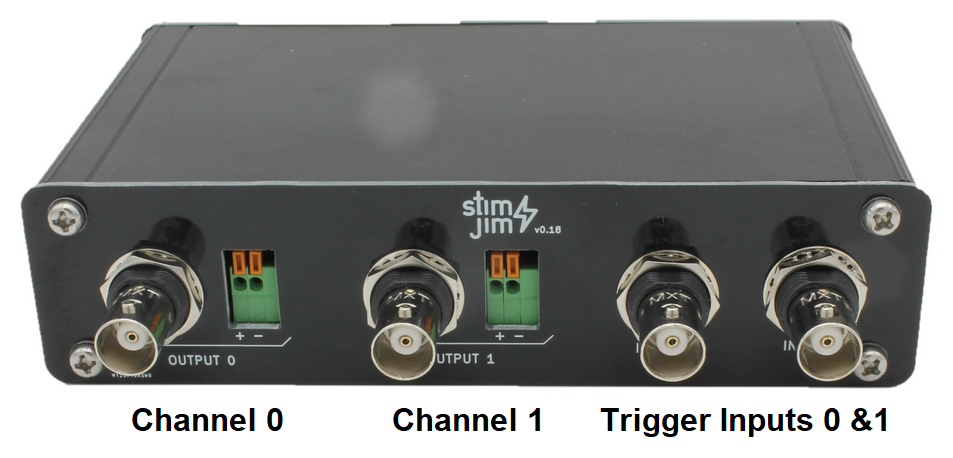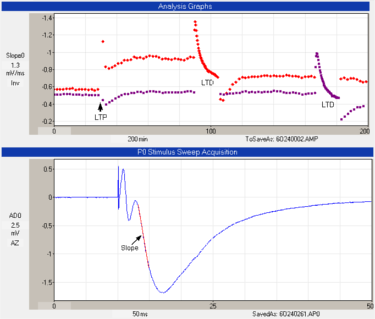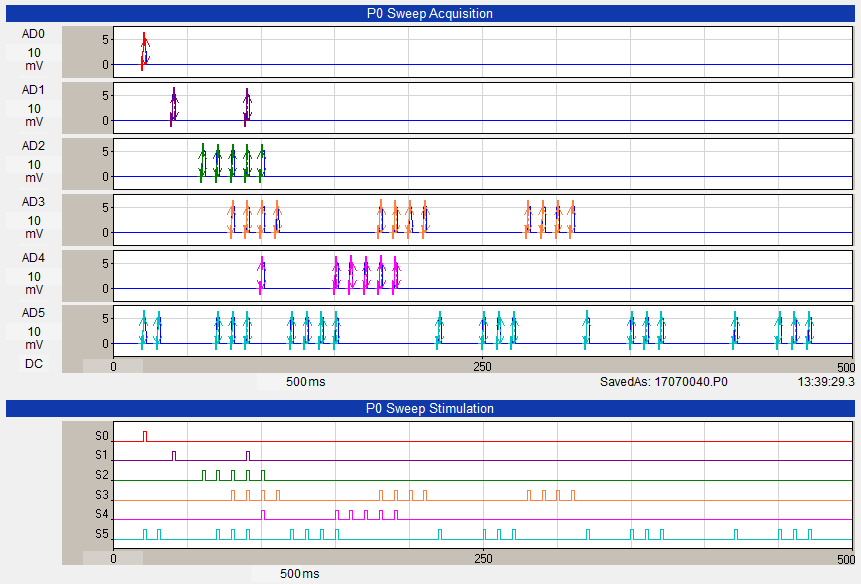- View sweeps by clicking on an Analysis
Graph data point - Impose single and averaged sweeps
- Quarantine bad sweeps in reanalysis
- PopSpike Area, Amplitude & Latency
- Three types of Slope measurement
- Analyze all EPSPs in a sweep
- Special analyses of trains Rs measurement from unfiltered trace
- Convert WinLTP data files to ABF files
- Reanalysis of ABF, IBW and WCP files
|
WinLTP 3.01 |
| WinLTP 3.01 is a bug fix for WinLTP 3.00 - which includes |
| 1) Increasing the number of AD channels from 2 to 6. |
| 2) Increasing the extracellular stimulation outputs from 2 to 8. |
| 3) The extracellular stimulation can be more complex. |
|
4) The
interface has been enhanced to deal with the
extra AD and stim- ulation channels by placing the analysis graphs on a second monitor. |
|
|
 |
A free, open-source program by Bill Anderson (designer of WinLTP) to control the StimJim stimulator as an intellegent stimulus isolator - including incrementing of stimulus amplitudes. |
|
WinLTP is a stimulation, data acquisition and on-line analysis electrophysiology software program for studying Long-Term Potentiation (LTP) and similar synaptic phenomena, and uses patch-clamp and extracellular synaptic local field potential recording. WinLTP is multitasking and simultaneously runs two tasks: 1) stimulus/acquisition sweeps, and 2) continuous acquisition saving Axon Binary Files. Central to the design of WinLTP is the Protocol Builder which can be used to generate complex induction stimulations. WinLTP also has Automated Perfusion Control, which when coupled with the Protocol Builder, enables automated experiments to be run after a stable baseline has been achieved. WinLTP is easy to use. After installation, a single mouse click starts the baseline recording of an extracellular LTP experiment with averaging. Another single mouse click will evoke single train stimulation, theta burst stimulation, or Low Frequency Stimulation (for LTD induction). |
 Overview of WinLTP |
WinLTP runs on Windows computers and uses National Instruments USB, PCI and PCIexpress M- and X-Series data acquisition boards. Note that only WinLTP versions 2.30 and earlier support Axon Instruments' Digidata 1320A and 1322A boards.
WinLTP can be run in two different ways: the Standard version of the WinLTP Acquisition program with full functionality except for Automated Perfusion Control, and the Advanced Version with full functionality including Automated Perfusion Control. The Standard and Advanced Versions of WinLTP Acquisition require the purchase of a License Key. The WinLTP Reanalysis program continues to be free.
